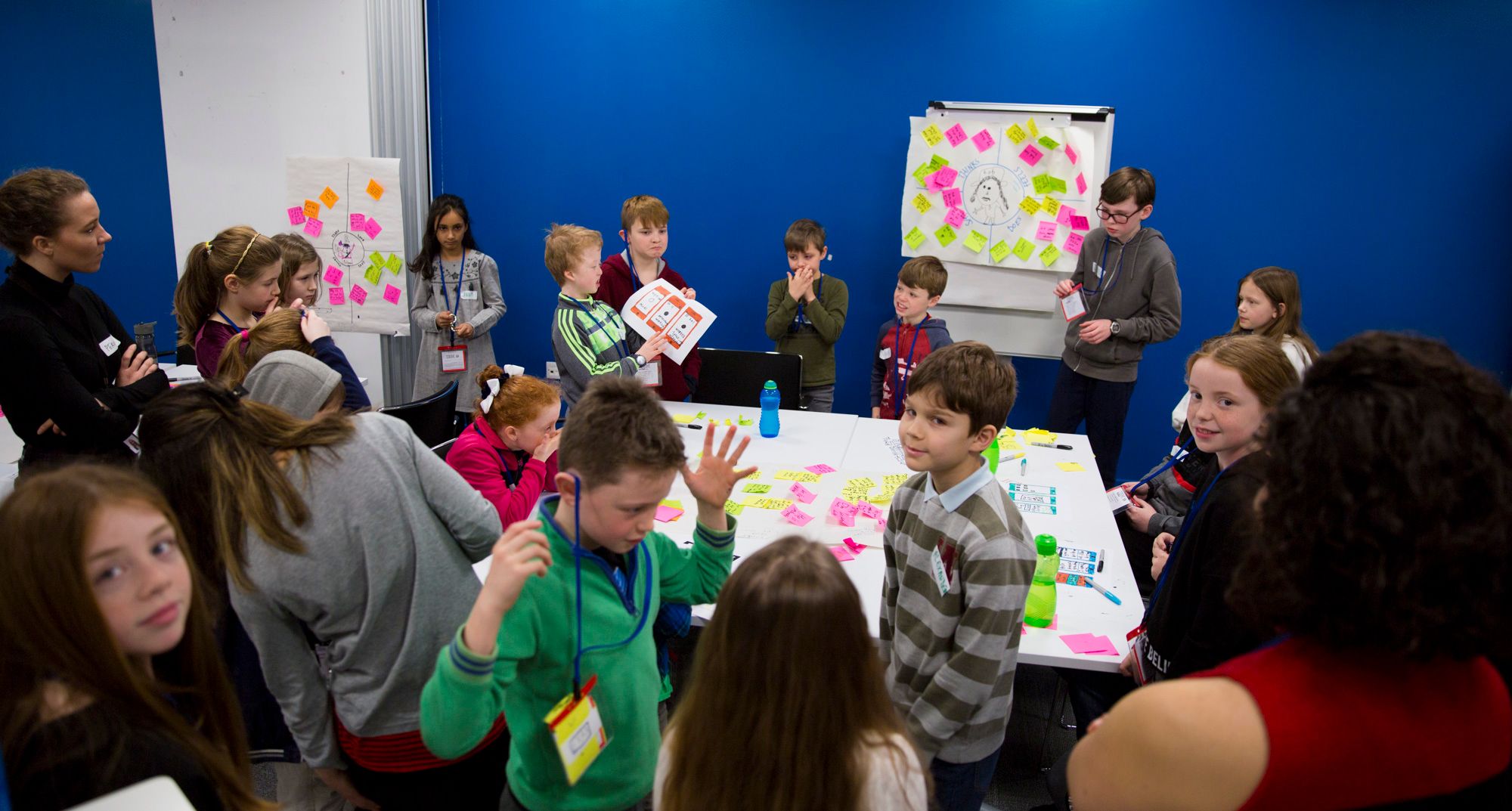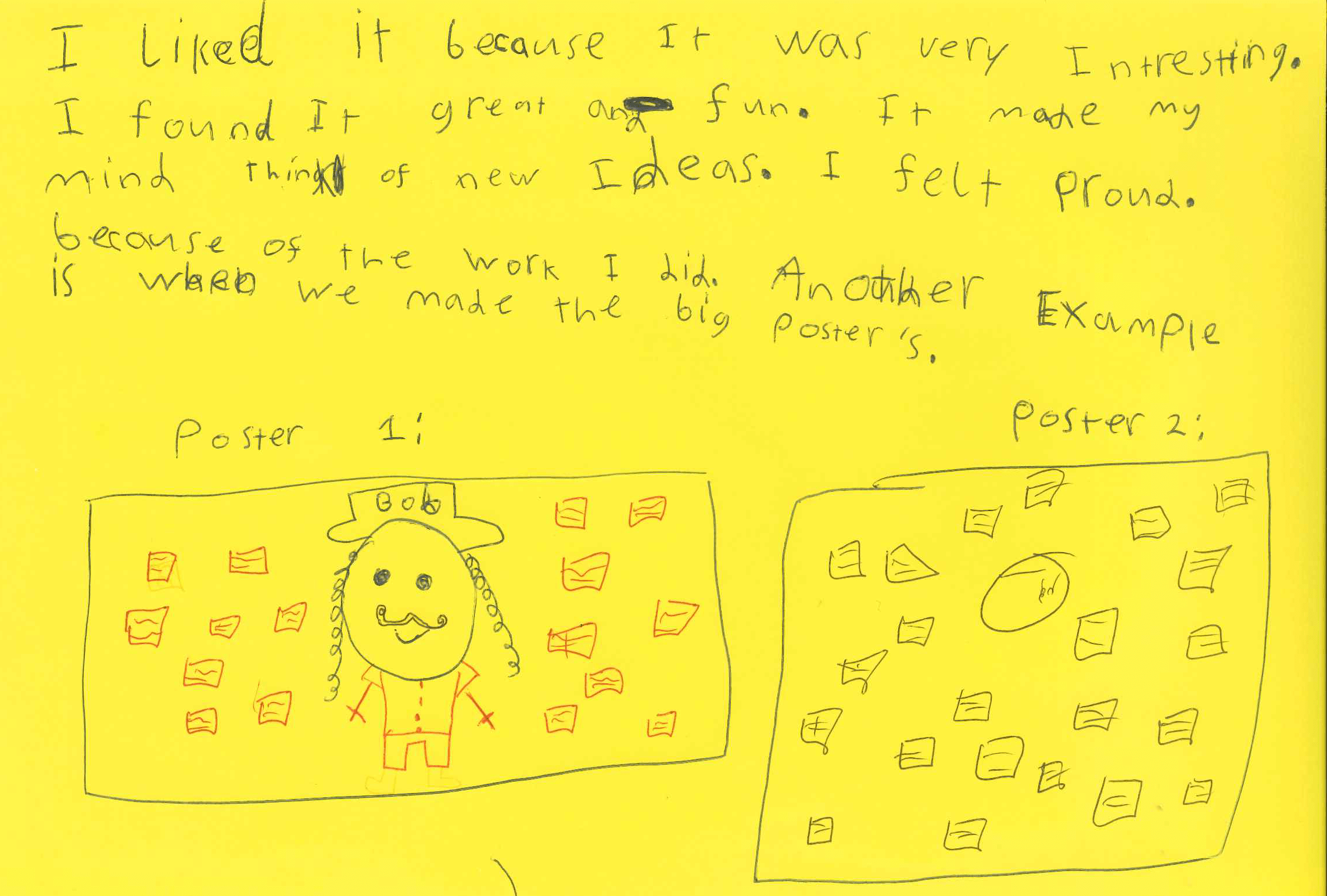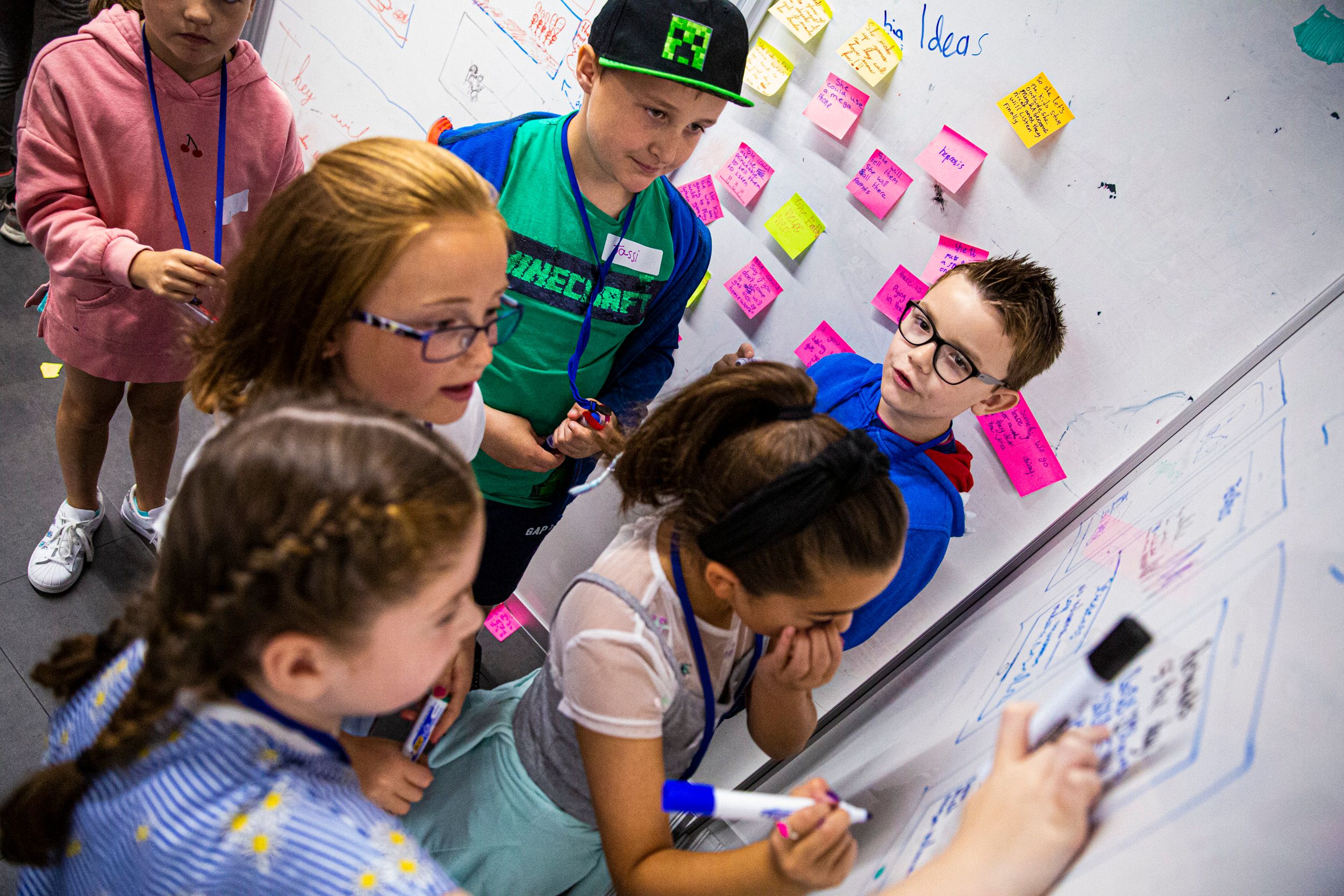Background
As part of Bring Your Child to Work Day at IBM, a fellow designer approached me about teaming up to run design thinking sessions with the children. Thinking back on our younger years, we wish we’d been exposed to design sooner in life, and hope to inspire the next generation of makers.
Creating the workshop content
To create the workshop and its curriculum, we had to think of these 8-10 year olds as the user.
- What are 8-10 year olds interested in these days?
- What cultural examples could we use that would illustrate what design is, and its importance?
- What is a common problem statement we could get them to rally around, that they’d feel inspired to solve?
We made plenty of assumptions — that they’re tech saavy, and that school is a common experience that is ripe with problems they’d be eager to solve. What child wouldn’t want to redesign their educational experience, right?
With our assumptions in mind, we created an agenda of activities based on our design thinking training. We gave the children the option to pick between 3 school related prompts, with different users as the focus of each. They could solve problems for a stressed teacher, a new student in the classroom, or a daydreamer classmate.
The big day
How did it go?
You can probably guess based on the image below. It was… okay. By the end of the session, my partner and I were exhausted, a lot of the kids had become so distracted they didn’t even finish their assignment, and we weren’t sure if any of them got anything out of it.

But a few days later, I received this image in my inbox from a parent of two of the participants. If only two kids got something out of it, then it was worth it. I was determined to try again! I start planning for Round 2 by jotting down notes about what went wrong this first time.
- Too much time for each activity
- Too many kids in one room
- Need more designers present
- Too much time for each activity
- Be more clear about the final outcome


Getting feedback
I had planned the original workshop based on assumptions I had of 8-10 year olds, so I shouldn’t have been surprised about how wrong I was about them. Thankfully for this next round, I had the opportunity to meet with a local primary school teacher beforehand, share my experience, and get feedback from her for next time. She had some great suggestions that I was eager to try out:
- More frequent breaks, including a dance party to burn off some excess energy
- Improve the child to adult ratio
- Keep them on their feet, away from desks
- Have them working on whiteboards — everyone loves drawing on whiteboards!
Round 2
You can see the difference in engagement just from the photos. All participants were on their feet, and focused on the task. They came up with some brilliant app ideas to help bus drivers locate their students. The smaller group allowed us to keep better tabs on each child’s progress and address their needs. And the 10 minute dance party at the halfway point was a big hit.

Lessons learned
- The design thinking mentality of continuous improvement can be applied to any situation, not just product design. I essentially did a retro and revision to this project, and got to watch it evolve into a more meaningful experience.
- If you can’t talk to your users, find the next best person. I’m sure interviewing the kids ahead of time would have given me plenty of ideas on how to engage them in the workshop. But since that wasn’t feasible, meeting with someone whose entire day is focused around helping kids grow is the next best thing. Without the teacher’s input, I would have made far more mistakes the second time around.
- If it’s a cause you care about, it’s worth the effort to persevere. This project was self-initiated and run in my spare time. I’m very proud of what we were able to achieve and hope I can continue to teach kids about the power of design.